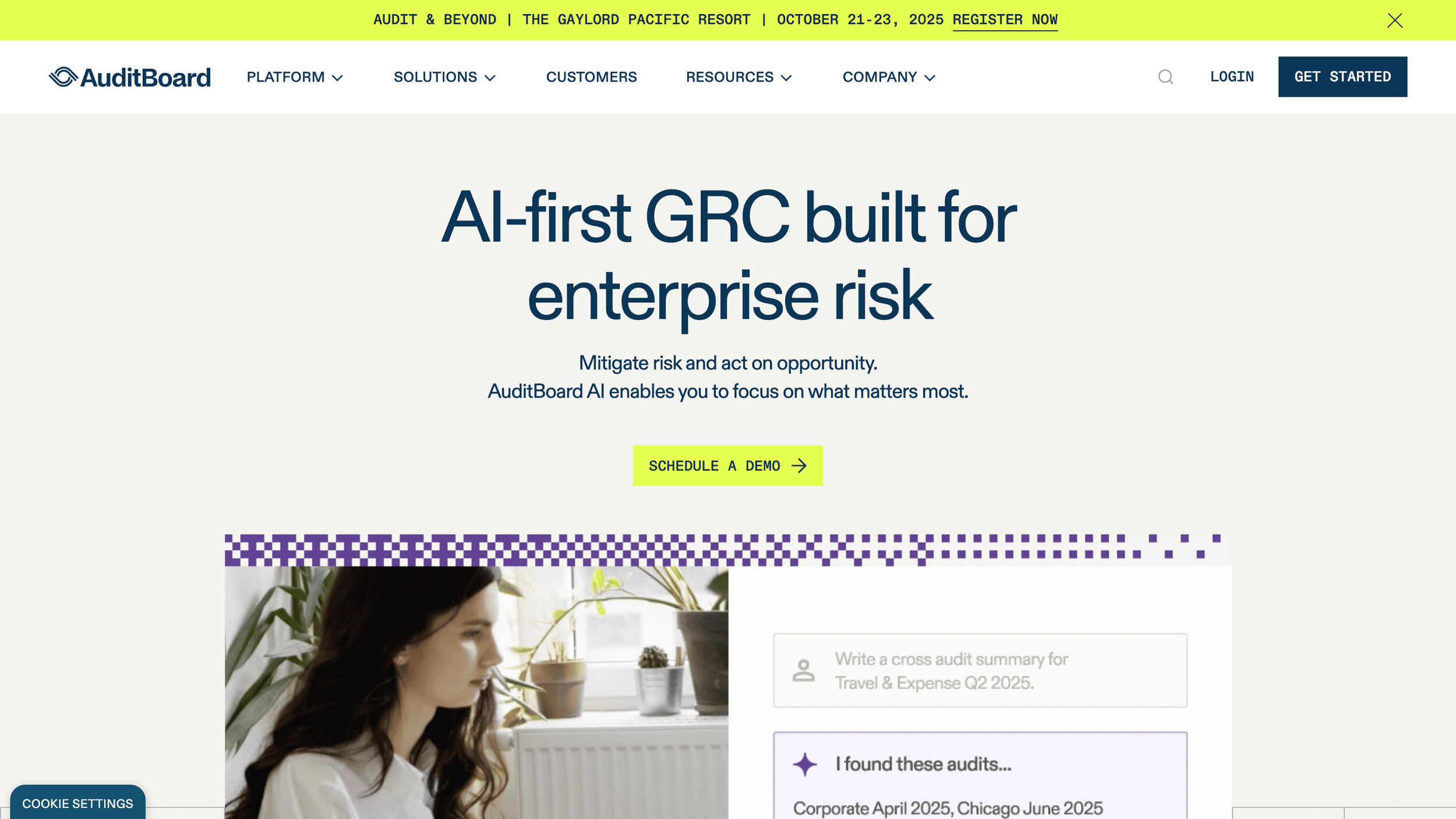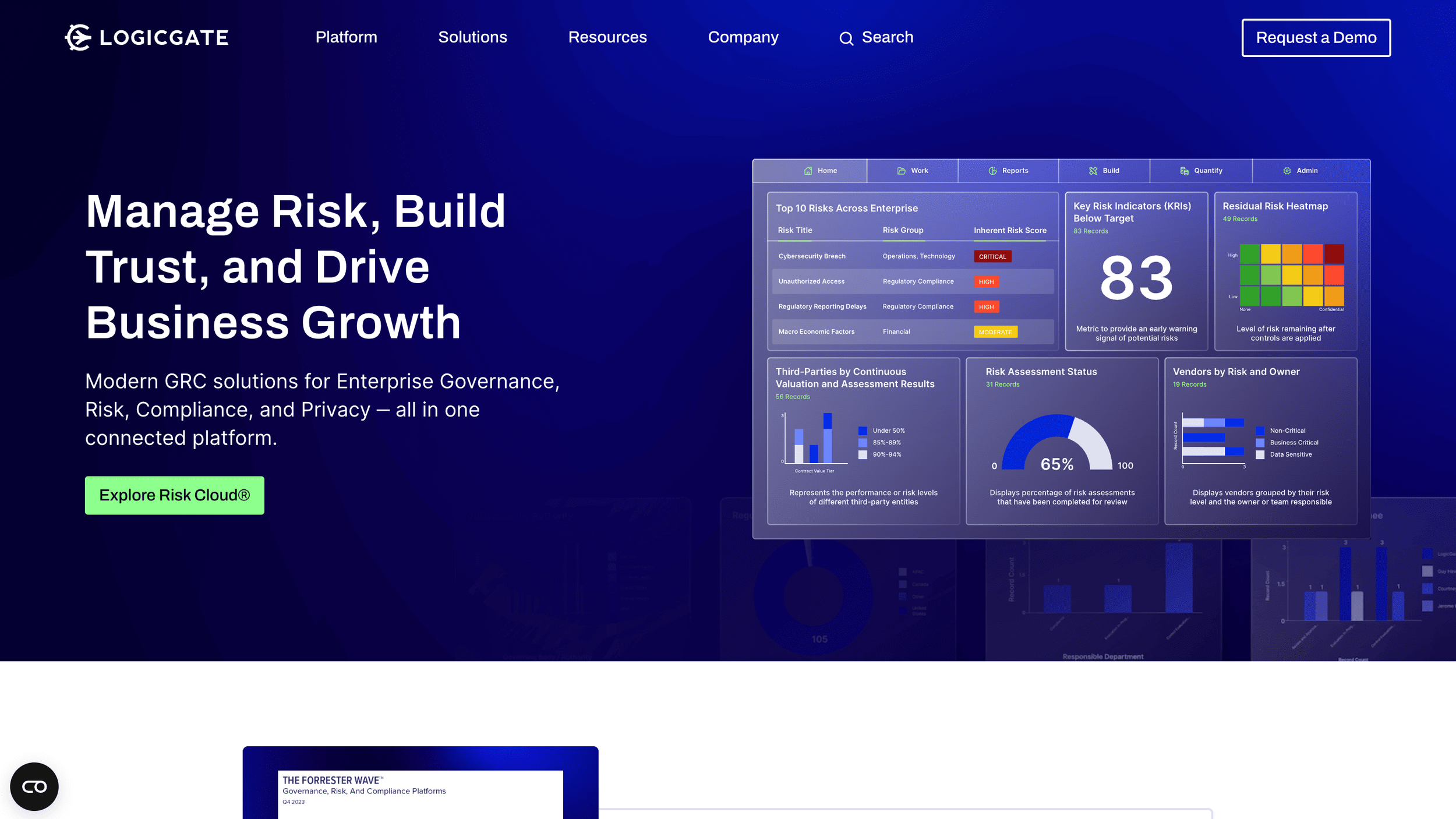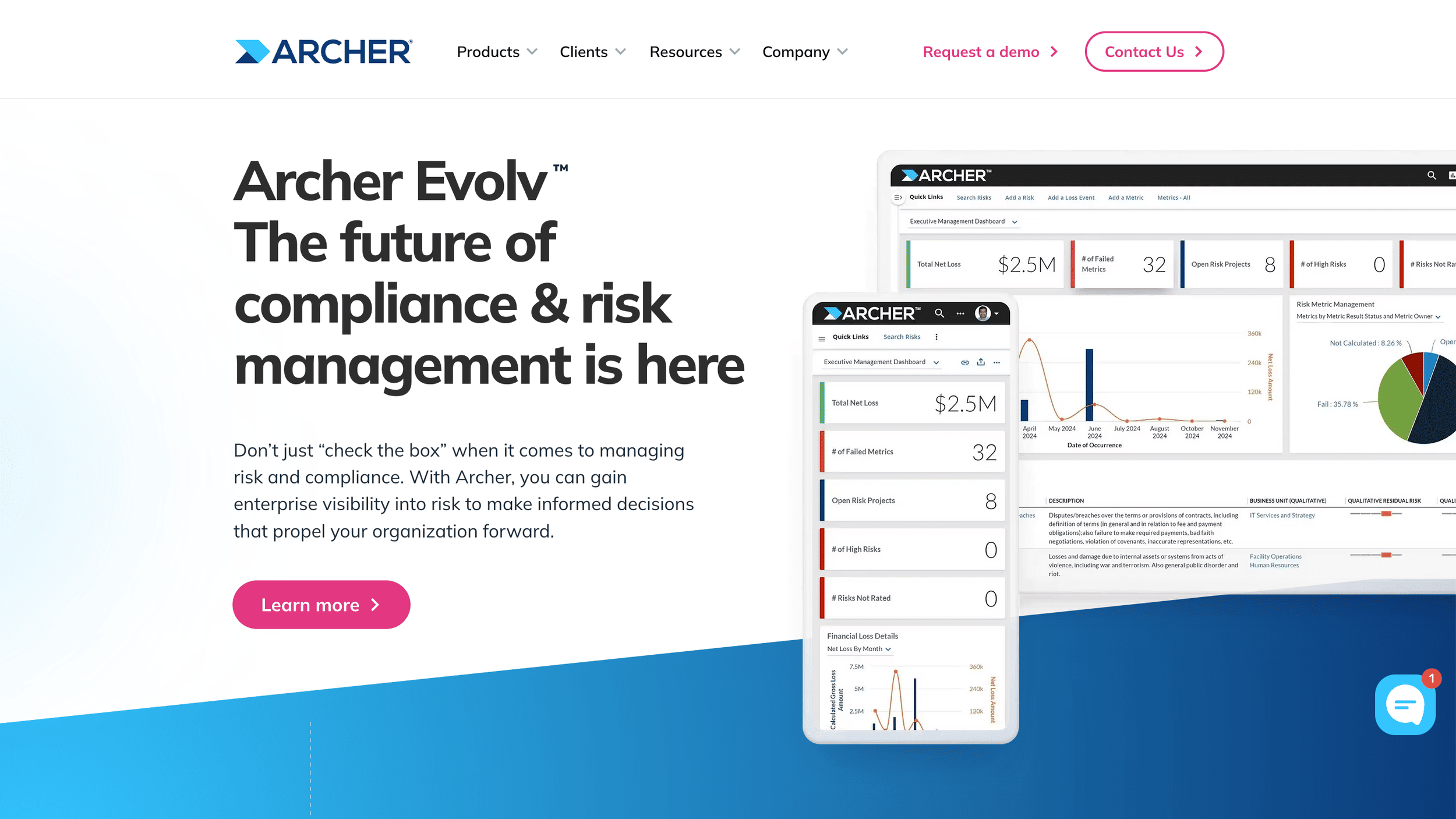Enterprise Governance, Risk and Compliance Solutions: Top Tools
Enterprises today face increasing pressure to meet regulatory demands, manage complex risks, and uphold governance standards, all while driving business performance. As compliance frameworks grow more demanding and cybersecurity threats more sophisticated, scattered spreadsheets and reactive policies no longer cut it.
This is where modern Governance, Risk, and Compliance (GRC) platforms step in. These tools bring structure, automation, and real-time visibility into how organizations manage risk and adhere to internal and external standards. With analysts like Gartner spotlighting leaders in the Magic Quadrant for enterprise governance risk and compliance platforms, businesses now have clearer guidance on selecting solutions that align with their size, industry, and growth goals.
In this blog, we’ll explore what GRC tools really offer, why they’ve become essential and how to implement them effectively.
Overview
GRC platforms streamline governance, risk management, and compliance in one integrated system.
Modern tools focus on real-time visibility, automation, and scalability, especially across complex vendor ecosystems.
Choosing the right platform means aligning features with your business size, industry, and compliance landscape.
A successful rollout hinges on executive support, targeted training, pilot testing, and ongoing optimization.
Auditive enhances GRC success with its Trust Center and built-in Vendor Risk Management, enabling smarter decisions and stronger control across the enterprise.
What Are GRC Tools?
Governance, Risk, and Compliance (GRC) tools are purpose-built platforms designed to help organizations manage policies, assess risks, and meet regulatory obligations with greater consistency and control. These tools replace manual processes with structured, automated workflows that connect compliance functions, internal controls, and enterprise risk management.
What makes GRC platforms critical is their ability to unify fragmented efforts across departments, legal, finance, security, and operations into a single framework. This centralized approach not only improves visibility into risk exposure but also supports faster decision-making and accountability.
By integrating key governance functions into one platform, GRC tools help organizations maintain control in complex, fast-moving environments without losing agility or oversight.
Why Enterprises Are Investing More in GRC Solutions?
The shift toward modern GRC platforms is driven by the rising complexity of business environments and a growing demand for operational transparency. What was once a box-ticking exercise is now a strategic function essential for resilience and trust.
High-profile corporate failures, tightening regulations, and evolving risk landscapes have made decentralized oversight unsustainable. Enterprises are turning to GRC tools to unify fragmented risk functions and ensure decisions are backed by real-time data and accountability.
Key drivers behind this shift:
Stricter regulatory mandates across finance, healthcare, and tech require deeper visibility and faster compliance response.
Post-crisis risk awareness, from the 2008 recession to cybersecurity breaches, has highlighted the need for structured oversight.
Operational complexity with third-party vendors, data governance, and ESG obligations is too dynamic for manual systems.
Demand for real-time accountability calls for integrated platforms that link policy, audit, risk, and controls in one system.
GRC tools are no longer just compliance enablers; they are strategic assets for protecting reputation, value, and operational continuity.
Top 5 GRC Platforms to Watch
As governance, risk, and compliance requirements grow more interconnected and business-critical, organizations need platforms that can scale with complexity and provide real-time insights. The following GRC solutions stand out for their flexibility, usability, and forward-looking capabilities, positioning them as leaders to watch.
1. Auditive
Auditive offers a trust-centric approach to governance and risk, built around real-time visibility, intelligent access control, and automated trust signals. Rather than reacting to incidents after the fact, Auditive helps organizations preempt risk through continuous monitoring of access behaviors across users, vendors, and systems.
Why it stands out:
Maps access patterns and trust paths to uncover implicit risks
Automates remediation suggestions using real-time trust scores
Centralizes compliance evidence with a dedicated Trust Center
Strengthens vendor risk management with clear, auditable oversight
Auditive is especially suited for enterprises with complex identity structures and growing third-party ecosystems seeking unified control over access and governance.
2. AuditBoard
AuditBoard simplifies the audit and compliance lifecycle with an intuitive interface and well-integrated workflows. Built for internal auditors and compliance teams, it enables strong collaboration across departments while reducing the burden of manual tracking.
Key strengths:
Centralized audit planning and execution
Automated workflows for issue tracking and reporting
Seamless collaboration across audit, risk, and compliance roles
Intuitive UI supports faster onboarding and team-wide alignment
AuditBoard’s strength lies in its ability to unify audit functions while offering deep visibility into regulatory compliance requirements.
3. LogicGate
LogicGate brings flexibility and control to enterprise risk management. It allows users to create tailored workflows that align with specific risk appetites and governance models, without needing extensive technical expertise.
Key strengths:
Custom workflow builder with drag-and-drop functionality
Integrated compliance automation and tracking
IT risk management features to identify and remediate vulnerabilities
Strong analytics dashboard for real-time risk insights
The platform is ideal for organizations seeking to adapt governance processes to their internal operating model, especially those with evolving risk frameworks.
4. ServiceNow GRC
Building on its ITSM foundation, ServiceNow offers a scalable GRC suite that consolidates risk, compliance, and IT operations into a unified experience. It emphasizes workflow automation, cross-team visibility, and AI-enhanced responsiveness.
Key strengths:
Embedded risk and compliance workflows within daily operations
Unified data model eliminates silos and enhances reporting
No-code playbooks for rapid workflow design
Virtual agent capabilities to assist users in real time
For enterprises already leveraging ServiceNow in IT, its GRC solution offers a natural extension, integrating seamlessly into existing environments.
5. Archer
Archer focuses on proactive risk monitoring and operational resilience. It enables organizations to continuously assess and respond to risks across critical business areas while maintaining oversight on third-party and asset-level vulnerabilities.
Key strengths:
Dynamic dashboards and customizable reporting tools
Integrated third-party risk onboarding and profiling
Asset protection and infrastructure monitoring
Flexible assessments that adapt to shifting regulations
Archer is well-suited for businesses prioritizing operational continuity, with strong controls around vendor interactions and critical asset defense.
How to Select the Right GRC Tool for Your Organization
Choosing the right Governance, Risk, and Compliance (GRC) platform isn’t just about ticking off features, it’s about finding a solution that aligns with your business model, risk profile, and operational priorities. The right tool will simplify decision-making, improve accountability, and deliver measurable value over time.
Here’s what to consider:
1. Define the scope of use
Start by outlining what your organization needs the tool to manage. Some enterprises need a full suite covering policy management, risk assessments, incident tracking, and compliance workflows. Others may only require focused capabilities like vendor risk monitoring or audit automation. Clarify these needs early so you're not overspending on functionality that won't be used, or overlooking gaps that matter.
2. Evaluate integration compatibility
The GRC platform should connect seamlessly with your existing systems, whether that includes document repositories, ERP software, ticketing tools, or identity management solutions. Lack of integration creates silos and manual workarounds, which defeats the purpose of automation.
Auditive, for example, is built with interoperability in mind. Its trust architecture integrates cleanly with existing workflows and third-party systems, providing unified oversight across access, compliance, and vendor ecosystems.
3. Prioritize configurability
Every organization has its own structure and processes. Your GRC solution should adapt to that, not the other way around. Look for customizable dashboards, adjustable workflows, and user-defined controls that reflect how your teams actually operate.
4. Focus on usability for broader adoption
If the platform is difficult to navigate, it won’t be adopted beyond compliance or audit teams. A clean interface, intuitive navigation, and logical workflows are essential to engage operational users, ensure timely reporting, and foster a culture of accountability.
5. Consider licensing and deployment flexibility
Costs can vary widely across vendors, especially when factoring in user volume, cloud vs. on-premise deployments, and support tiers. Match pricing models to your scale and operational preferences. Factor in long-term scalability, not just current needs.
The best GRC tool won’t just streamline audits, it will provide clarity, reduce operational friction, and support real-time decision-making.
Platforms like Auditive stand out by offering actionable trust insights, policy automation, and full-lifecycle risk visibility across internal teams and third-party partners, all within a framework that scales with your organization.
4 Key Benefits of Implementing a GRC Platform
Implementing an enterprise-grade GRC platform creates measurable value across risk, compliance, and operational layers. When governance, risk management, and compliance are handled within a centralized system, organizations gain clarity, control, and consistency in how they operate.
1. Better strategic visibility
Centralized dashboards provide executives with a unified view of enterprise-wide risks, internal controls, and compliance status. This visibility improves decision-making by grounding it in verified, real-time data rather than fragmented reports or reactive assessments.
2. Proactive compliance and risk response
A mature GRC solution automates the detection of compliance gaps and policy violations, helping teams act before risks escalate. Real-time alerts and built-in workflows make it easier to respond systematically, not just quickly.
3. Strengthened accountability
Clearly defined ownership over risk and compliance tasks builds a culture of accountability. When individuals understand their role within broader governance structures and can track progress within the platform, it becomes easier to demonstrate control effectiveness.
4. Operational efficiency at scale
By integrating risk and compliance processes into daily workflows, GRC tools eliminate manual tracking, reduce duplication, and minimize silos between teams. The result is a more agile organization that allocates resources with greater precision.
This is where platforms like Auditive deliver critical value. By combining dynamic trust signals with integrated oversight, Auditive helps teams move beyond surface-level compliance, ensuring governance is not just enforced, but embedded into how decisions are made across systems and stakeholders.
Challenges Enterprises Face When Adopting GRC Tools
While GRC platforms offer significant advantages, their adoption often presents practical and organizational hurdles. For many enterprises, the path to streamlined governance and risk oversight begins with addressing these core challenges head-on.
1. Organizational resistance to change
New systems often disrupt established workflows. Teams may hesitate to adopt unfamiliar platforms, especially when current methods feel sufficient. Building early stakeholder engagement, investing in targeted training, and reinforcing the value of centralized governance are critical for overcoming this inertia.
2. Integration complexity
GRC tools rarely operate in isolation. Successful implementation requires alignment with existing systems, ERP platforms, compliance databases, identity and access management tools, and more. Poor integration can lead to data silos or process friction. A thoughtful architecture is key, especially for enterprises managing multiple business units or regional frameworks.
Auditive’s modular architecture is built for seamless integration across diverse environments, helping enterprises gain unified visibility without forcing system overhauls.
3. Resource and capacity constraints
Budget limitations, stretched teams, or competing priorities can delay deployment. GRC tools require both financial investment and operational commitment, not just during implementation but across their lifecycle. Leadership must be aligned with long-term value, not just initial rollout costs.
4. Regulatory complexity
Evolving regulatory environments demand agility. Mapping global standards like GDPR, SOX, or HIPAA into a single platform can overwhelm internal teams, especially when regulations change faster than the tools can adapt. GRC solutions need to be flexible, regularly updated, and aligned with legal and audit functions.
Best Practices for a Successful GRC Implementation
A GRC tool is only as effective as its rollout. To maximize adoption and long-term value, organizations need a structured, adaptable implementation strategy that balances technology with people and processes.
1. Secure executive sponsorship
Senior leadership must champion the initiative to drive cross-functional alignment.
Reinforces that risk and compliance are strategic priorities
Drives accountability across departments
Improves adoption rates through top-down influence
2. Deliver role-specific training
Equip users with the right knowledge to use the platform effectively from day one.
Customize sessions based on team functions
Include hands-on exercises for practical familiarity
Reinforce training with job aids and on-demand resources
3. Start with a pilot rollout
Test in a controlled environment before scaling.
Choose a department or region for initial launch
Identify friction points and integration gaps early
Use pilot feedback to fine-tune workflows and policies
4. Focus on continuous optimization
GRC tools must evolve with business and regulatory change.
Monitor system usage and user engagement
Adjust configurations to meet shifting compliance needs
Schedule periodic reviews to expand functionality
Conclusion
Enterprises need more than checklists and spreadsheets; they need real-time insight, automated controls, and a scalable foundation for governance, risk, and compliance. The right GRC tool helps unify policies, surface blind spots, and streamline accountability across teams, systems, and vendors.
Auditive empowers organizations to take a proactive approach through its Trust Center, offering continuous visibility into data access, policy enforcement, and third-party risk. With advanced Vendor Risk Management capabilities and intelligent trust mapping, Auditive helps enterprises go beyond static compliance, toward an integrated, audit-ready GRC posture.
Book a personalized demo to see how Auditive supports your GRC goals with clarity, control, and confidence.
FAQs
Q1. What does a GRC platform do for an enterprise?
A1. It centralizes governance, risk management, and compliance processes, improving visibility, control, and regulatory alignment across departments.
Q2. What is Vendor Risk Management in GRC?
A2. It involves assessing, monitoring, and controlling the risk associated with third-party vendors, ensuring they meet your security, compliance, and governance standards.
Q3. Why is a Trust Center important in a GRC solution?
A3. A Trust Center consolidates access insights, policy enforcement, and audit trails—giving teams a single point of control and improving incident response and reporting.
Q4. What are common pitfalls when implementing GRC tools?
A4. Lack of executive support, poor user training, weak data integration, and treating implementation as a one-time project rather than an evolving process.
Q5. How does Auditive support GRC success?
A5. Auditive offers real-time trust signals, automated policy management, and full lifecycle Vendor Risk Management, all anchored in a unified Trust Center that strengthens control and compliance readiness.








